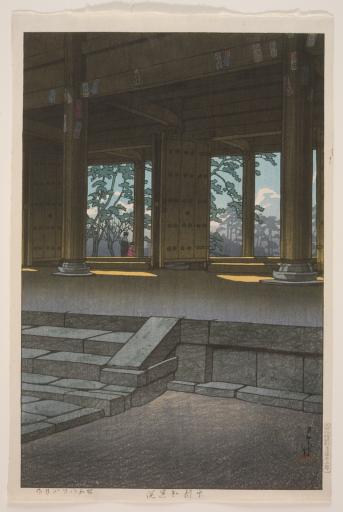Kyōto, Chion-in, Kawase Hasui
Artwork Overview
Kawase Hasui, artist
1883–1957
Kyōto, Chion-in,
1933, Showa period (1926–1989)
Where object was made: Japan
Material/technique: color woodcut
Dimensions:
Image Dimensions Height/Width (Height x Width): 389 x 258 mm
Image Dimensions Height/Width (Height x Width): 15 5/16 x 10 3/16 in
Sheet/Paper Dimensions (Height x Width): 364 x 240 mm
Sheet/Paper Dimensions (Height x Width): 14 5/16 x 9 7/16 in
Mat Dimensions (Height x Width): 19 x 14 in
Image Dimensions Height/Width (Height x Width): 389 x 258 mm
Image Dimensions Height/Width (Height x Width): 15 5/16 x 10 3/16 in
Sheet/Paper Dimensions (Height x Width): 364 x 240 mm
Sheet/Paper Dimensions (Height x Width): 14 5/16 x 9 7/16 in
Mat Dimensions (Height x Width): 19 x 14 in
Credit line: Museum purchase: Lucy Shaw Schultz Fund
Accession number: 1993.0315
Not on display
If you wish to reproduce this image, please submit an image request





